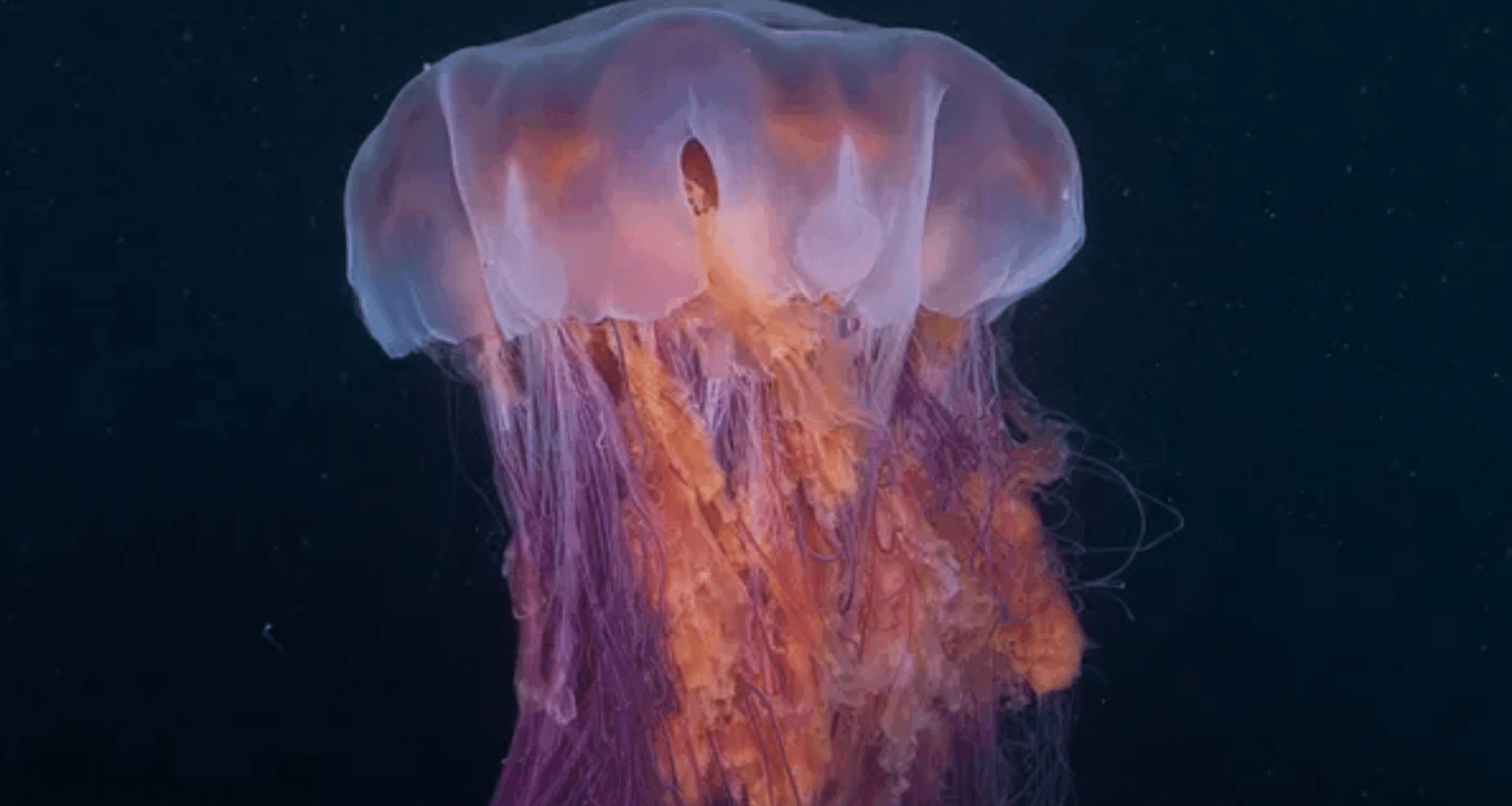In the mysterious depths of the Salish Sea, a giant creature, often hidden from human eyes, has captured the imagination of marine enthusiasts and videographers alike. The lion’s mane jellyfish, the heaviest jellyfish on Earth, was recently filmed during a night dive by underwater videographer John Roney. This awe-inspiring encounter, as reported by Discover Wildlife, showcases not only the jellyfish’s enormous size but also its breathtaking beauty. Let’s dive deeper into this incredible marine spectacle.
The Enormous Lion’s Mane Jellyfish: A Deep-Sea Giant
The lion’s mane jellyfish is one of the largest jellyfish species in the world, with some individuals reaching a weight of over 1,000 kg—an astonishing figure for any marine animal. The jellyfish’s immense size makes it a rare find, especially in the depths of the Salish Sea, where it was recently filmed during a night dive. The creature’s long, flowing tentacles stretch out for great distances, a sight that seems more suited to a mythical ocean rather than the real world.
Underwater videographer John Roney, who captured the footage, recalls his first encounter with the massive creature:
“Several minutes into the dive, I noticed a long, thin tentacle trailing overhead, stretching far beyond my vision,” he says. “I followed it through the darkness for over a minute before coming upon a giant lion’s mane jellyfish.”
This moment of discovery, captured on camera, highlights the sheer scale and majesty of the creature, which pulses gracefully through the water, its colorful tentacles trailing behind it like a living work of art.
The Beauty of Its Vibrant Colors
One of the most striking features of the lion’s mane jellyfish is its tentacles, which are not just long but also rich in color. Roney’s footage captures the deep, vibrant orange, purple, and crimson hues of the tentacles, which shimmer and move with the flow of the water. These striking colors add to the creature’s otherworldly presence, making it an absolute marvel to behold. As Roney explains, “have these deep, vibrant orange, purple and crimson colours that I love to film.”
The colors of the jellyfish’s tentacles are not just for show—they serve as a visual indicator of the species’ venomous capabilities. While these colors might be mesmerizing, they come with a warning: the lion’s mane jellyfish delivers a potent sting, capable of causing intense pain to those who come into contact with it.
The Threat of the Sting
Despite the lion’s mane jellyfish’s mesmerizing appearance, it is not a creature to be approached lightly. Known for its painful sting, the jellyfish’s tentacles are lined with specialized cells that contain venom. These cells are designed to paralyze smaller marine creatures, making it easier for the jellyfish to capture its prey. For humans, the sting can cause severe pain, skin irritation, and in rare cases, even more serious medical issues.
“Fair warning,” says Roney, “This is a jellyfish you definitely don’t want to touch.” The venomous sting is a defense mechanism that helps the jellyfish protect itself in the wild. Roney’s advice echoes the caution required when encountering this magnificent but dangerous creature.
The Salish Sea: An Underwater Wonderland
The Salish Sea, where this encounter with the lion’s mane jellyfish took place, is a marginal sea of the Pacific Ocean, nestled between the U.S. state of Washington and the Canadian province of British Columbia. Known for its rich marine biodiversity, the Salish Sea is home to a variety of marine creatures, from giant manta rays to the elusive orca whale. It is also one of the most ecologically significant bodies of water in the world, making it a crucial habitat for many species.
The sea’s nutrient-rich waters provide the perfect environment for the lion’s mane jellyfish, which thrives in colder, deeper ocean waters. The unique geography of the Salish Sea, with its mix of deep water channels and shallower bays, creates an ideal environment for a variety of marine life, including these majestic jellyfish.

